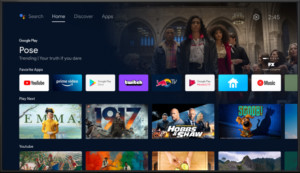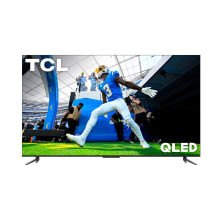8K Television for Sale: Is it Worth the Investment?
Resolution used to be the gold standard of picture quality. But times have changed. There are still compelling reasons to avoid 8K TVs in 2024, despite advancements in technology. This article explores why 8K TVs haven’t lived up to the hype and why you might want to reconsider buying one.
Why 8K TVs Haven’t Taken Off
The promise of 8K resolution revolutionizing television viewing fell flat. Manufacturers overestimated their market influence and underestimated consumer savvy. Early 8K TVs lacked crucial components for a true 8K experience. The push for 8K seemed more like a response to the growing popularity of OLED technology, a threat to the LCD market, than a genuine advancement for consumers. Priced exorbitantly, these early 8K TVs often offered inferior picture quality compared to more affordable 4K OLED options, especially when 4K content was still gaining traction.
Reasons to Reconsider Buying an 8K TV in 2024
While 8K technology has improved, high prices and other factors remain. Many manufacturers even abandoned the 8K market in 2023. Here’s why you should think twice before investing in an 8K television:
1. Resolution Isn’t Everything: 4K OLED Often Outperforms 8K LCD
Picture quality is no longer solely defined by resolution. Contrast and HDR capabilities play a more significant role. A 4K OLED TV can deliver a superior viewing experience compared to a pricier 8K LCD TV. Ironically, the most advanced miniLED backlight technology, crucial for LCD picture quality, is now found in 4K LCD models, not their 8K counterparts.
One of the largest TVs available, TCL’s 115-inch model, boasts 4K resolution and significantly more miniLED dimming zones than typical 8K LCD TVs.
2. The Largest Screens are 4K
Contrary to expectations, the largest TVs on the market, including OLED, LCD, and microLED options, usually feature 4K resolution. This trend spans from LG’s 97-inch OLED to TCL’s massive 115-inch LCD. Why buy a smaller 8K LCD when a larger, more affordable, and potentially better 4K option exists?
3. 8K Content Remains Scarce
Six years after the first 8K TVs launched, 8K content is still lacking. Hollywood studios, streaming giants like Disney+, Max, and Netflix, and even the gaming industry show minimal interest in 8K production. Don’t hold your breath for an 8K UHD Blu-ray format either; it’s highly unlikely.
4. “Upscaling” Doesn’t Enhance Quality
Manufacturers often tout 8K upscaling as a solution to the content scarcity. This claim is misleading. Upscaling merely stretches lower-resolution images to fit the 8K screen. It doesn’t improve the inherent quality; in fact, it can often degrade it. True enhancements come from higher-resolution source material, not artificial manipulation.
5. Efficient 8K Video Formats are Still Emerging
Current 8K TVs often lack native support for efficient 8K video formats. While HEVC and AV1 technically support 8K, they require high bandwidth. Next-generation codecs like VVC (H.266) or AV2 are needed to make 8K streaming and broadcasting feasible.
New video codecs like VVC (H.266) significantly reduce the bandwidth required for 8K.
6. “Fake” 8K Still Exists
Some 8K LCD TVs still employ sub-pixel rendering techniques that compromise true 8K resolution to improve viewing angles. This issue persists even in newer models, raising concerns about genuine 8K capabilities.
7. Focus on Better Pixels, Not More
The industry is shifting its focus towards HDR and higher frame rates, recognizing that simply increasing resolution yields diminishing returns. Low frame rates in much of today’s content limit the perceived resolution during motion, even on an 8K screen.
The future of television lies in enhancing pixel quality, not just increasing their number.
8. HDMI 2.1 Bandwidth Limitations
While HDMI 2.1 supports up to 48Gbps, it might not be sufficient for uncompressed 8K content at high frame rates and color depth. Display Stream Compression (DSC) can increase bandwidth, but its limited implementation and documentation create hurdles for a seamless 8K ecosystem.
Conclusion
While 8K technology holds future potential, current limitations make it a questionable investment. Focus on factors like display technology, HDR, and overall picture quality rather than solely resolution when choosing a new TV. A high-quality 4K TV often provides a superior viewing experience compared to today’s 8K offerings. Consider waiting for more mature 8K ecosystem development before making the leap.








